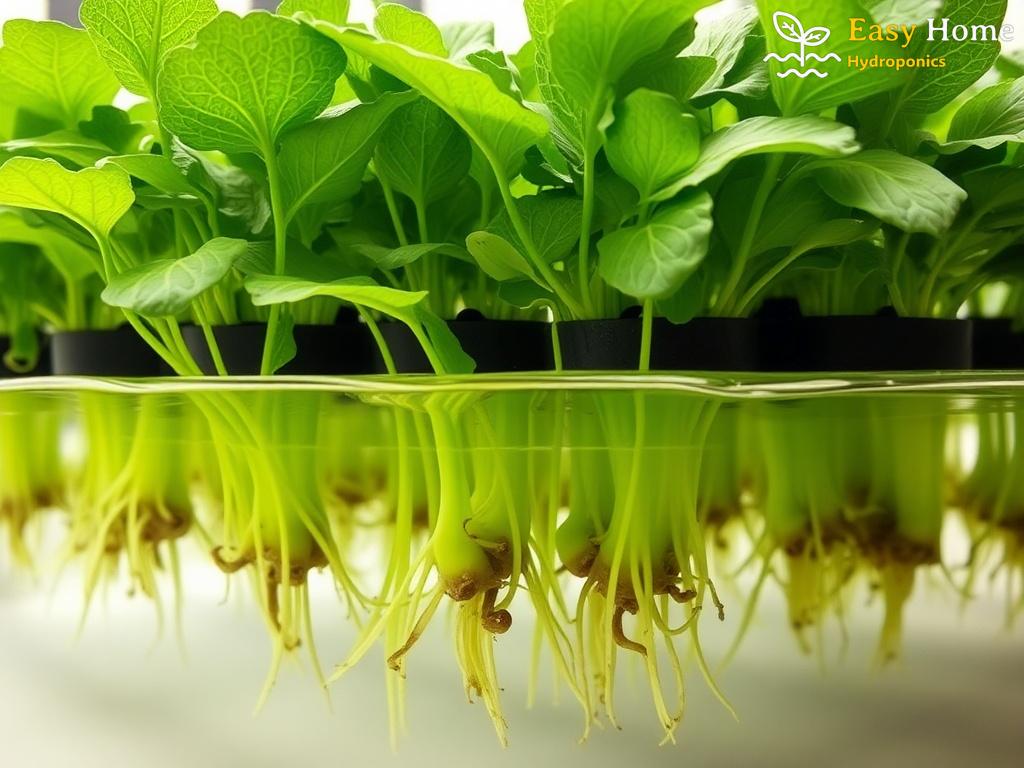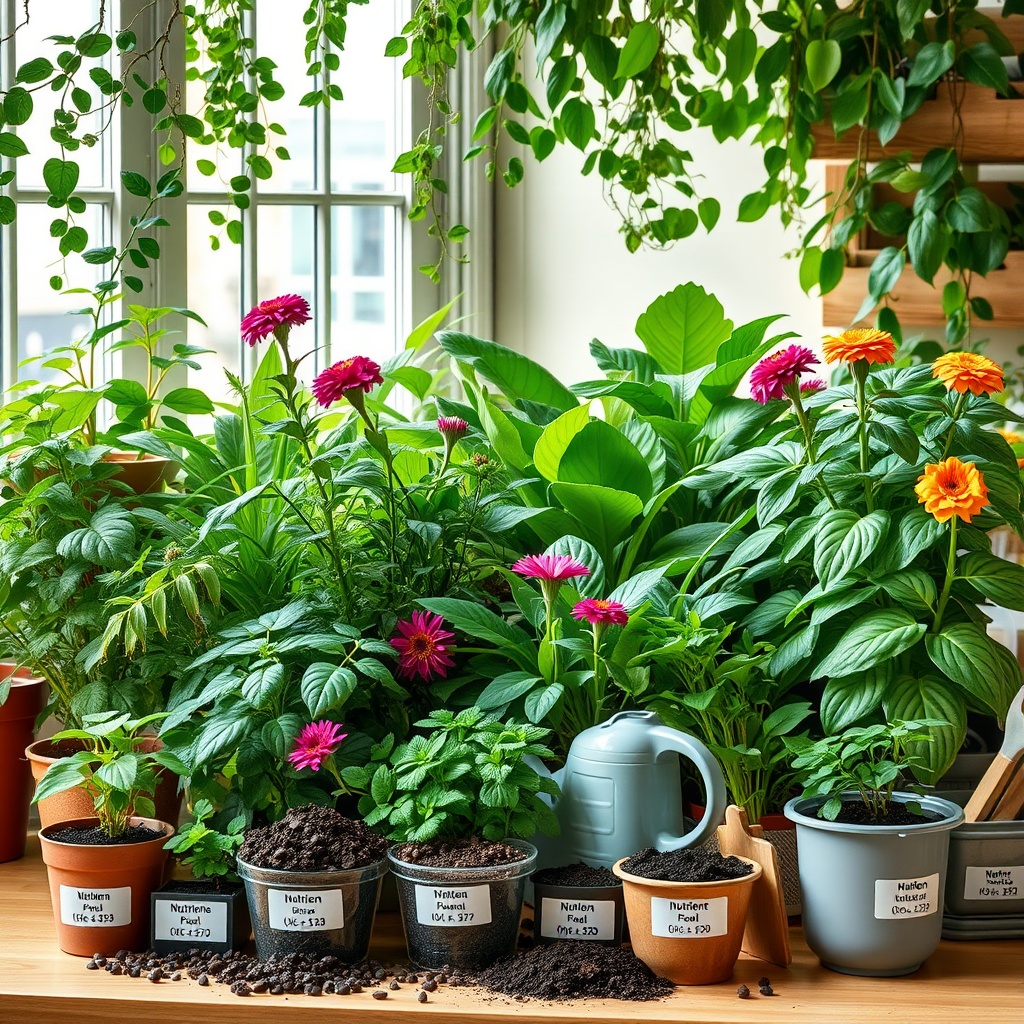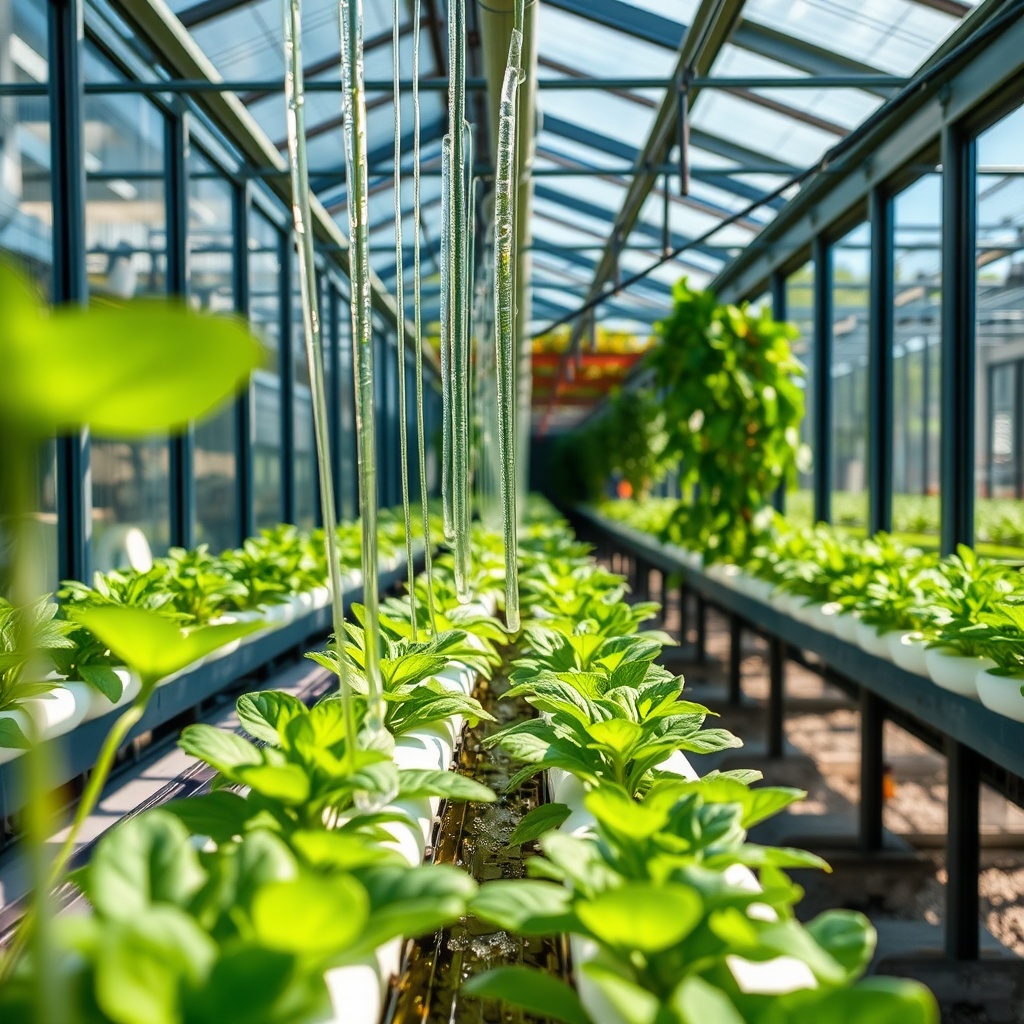Iron’s Vital Role in Plant Growth
When we think of essential nutrients for plant growth, iron often takes a backseat to more commonly recognized elements like nitrogen, phosphorus, and potassium. Yet, this trace metal plays a pivotal role in a plant’s health and vitality, especially in hydroponic systems where nutrient delivery is crucial. Understanding iron’s role can transform the way we cultivate plants, leading to lush greenery and bountiful harvests.
Iron is a key component of chlorophyll, the molecule responsible for capturing sunlight and converting it into energy through photosynthesis. Without sufficient iron, plants may exhibit symptoms of chlorosis, where leaves turn yellow due to insufficient chlorophyll production. This not only stunts growth but also reduces the plant’s ability to produce energy.
Moreover, iron facilitates the electron transport chain, a vital process in photosynthesis. When iron levels are inadequate, plants struggle to harness sunlight effectively, leading to poor development and reduced yields. Thus, maintaining the right levels of iron in hydroponic nutrient solutions is crucial for optimal plant health.
In hydroponic systems, the balance of nutrients is crucial. Too much iron can be as detrimental as too little, leading to toxicity and nutrient imbalances. Hydroponic growers must monitor their nutrient solutions closely to ensure that iron levels remain within an acceptable range. This requires a keen understanding of plant needs and the ability to adjust nutrient profiles accordingly.
To help growers manage iron levels effectively, here’s a comprehensive list of best practices:
- Regularly test nutrient solutions for iron concentration.
- Use chelated forms of iron for better absorption.
- Adjust pH levels, as iron availability is influenced by pH.
- Monitor plant symptoms for early signs of deficiency or toxicity.
- Rotate crops to prevent soil depletion of iron.
By adhering to these practices, hydroponic growers can ensure that their plants receive the right amount of iron, leading to healthier growth and higher yields.
Deficiency Symptoms: Spotting Iron Shortages
Understanding the nuances of nutrient deficiencies is crucial for hydroponic success, especially when it comes to iron. Despite its trace element status, the absence of iron can lead to profound consequences for plant development. As gardeners strive for optimal growth conditions, recognizing the symptoms of iron deficiency becomes an essential skill that can make the difference between a thriving crop and a disappointing yield. This section will delve into the specific indicators that signal an iron shortage, empowering growers with the knowledge to act swiftly.
One of the first symptoms of iron deficiency in plants is interveinal chlorosis, where the leaf veins remain green while the surrounding tissue turns yellow. This visual cue emerges primarily in younger leaves, reflecting the plant’s prioritization of older foliage for nutrient allocation. If left unaddressed, this condition can escalate, leading to stunted growth and diminished vitality. It’s essential for hydroponic growers to regularly inspect their plants, as early detection can significantly improve recovery outcomes.
As the deficiency worsens, the effects become more pronounced. Plants may exhibit necrotic spots or browning edges, indicating cellular damage and a decline in overall health. In severe cases, leaf drop can occur, ultimately impacting the plant’s ability to photosynthesize effectively. The critical insight here is that iron deficiency doesn’t just affect aesthetics; it compromises the entire growth process. A timely intervention can prevent irreversible damage, making it imperative for hydroponic cultivators to stay vigilant.
Furthermore, environmental factors like pH levels and nutrient interactions can exacerbate iron deficiency symptoms. A high pH can cause iron to become less available to plants, leading to confusion for growers who may be adding sufficient iron but not achieving the desired uptake. Therefore, it’s vital to monitor and adjust pH levels alongside iron concentrations, ensuring a balanced nutrient solution that promotes healthy plant growth.
Optimizing Iron Levels in Hydroponics
In the quest for thriving hydroponic systems, the significance of iron cannot be overstated. While often overshadowed by macronutrients, iron’s profound impact on plant health is undeniable. To truly harness the potential of hydroponics, growers must focus on optimizing iron levels within their nutrient solutions. This process not only enhances plant vitality but also paves the way for impressive yields and robust growth.
Iron’s availability is influenced by various factors, making its management a nuanced endeavor. One fundamental aspect is the pH level of the nutrient solution. At lower pH levels, iron remains more soluble and accessible to plants. Thus, maintaining a slightly acidic environment can significantly improve iron uptake. Growers should regularly monitor the pH, aiming for a range of 5.5 to 6.5 to optimize nutrient absorption. Additionally, the use of chelated iron forms can enhance plant uptake and mitigate potential deficiencies.
Understanding how different nutrients interact within the hydroponic system is essential for iron optimization. For instance, excessive levels of manganese or calcium can inhibit iron uptake, leading to deficiencies even when iron is present in the nutrient solution. It’s crucial for growers to conduct regular nutrient analysis, ensuring a balanced ratio of essential elements. By adjusting the concentrations based on plant needs and environmental conditions, cultivators can promote a harmonious nutrient environment that fosters iron availability and overall plant health.
| Factor | Impact on Iron Availability |
|---|---|
| pH Level | Lower pH increases solubility |
| Nutrient Interactions | Excess elements may inhibit uptake |
| Chelation | Enhances absorption efficiency |
In conclusion, optimizing iron levels in hydroponic nutrient solutions is a multifaceted process requiring vigilance and adaptability. By understanding the dynamics of iron availability and the interactions within the nutrient solution, growers can ensure their plants receive the necessary iron for robust growth and productivity. Ultimately, this meticulous approach can lead to flourishing hydroponic gardens and exceptional harvests.
Interactions Between Iron and Other Nutrients
In the intricate world of hydroponic gardening, understanding the interplay between various nutrients is crucial for achieving optimal plant growth. Among these nutrients, iron stands out for its essential role, yet its effectiveness can be significantly influenced by the presence of other elements. This section explores how iron interacts with key nutrients, shaping the overall health and productivity of hydroponic systems.
Iron does not operate in isolation; rather, it is part of a complex web of nutrient interactions. For instance, manganese, another micronutrient, can compete with iron for uptake within plant roots. When manganese is present in high concentrations, it may inhibit iron absorption, leading to deficiency symptoms even in nutrient solutions that contain adequate iron levels. Thus, maintaining a balanced ratio of these micronutrients is vital. Gardeners must keep a vigilant eye on their nutrient solutions to prevent such interactions from undermining plant health.
Beyond micronutrients, the relationship between iron and macronutrients like calcium and magnesium is equally significant. Excessive calcium can lead to iron lockout, where plants are unable to absorb the iron they require for growth. Similarly, magnesium’s role in chlorophyll production means that its deficiency can exacerbate iron-related issues, as both nutrients are crucial for photosynthesis. Hydroponic cultivators should regularly analyze their nutrient profiles to ensure these elements are present in harmonious proportions, thus fostering an environment conducive to healthy plant development.
Furthermore, nitrogen, while essential for plant growth, can also affect iron availability. High nitrogen levels may lead to lush foliage that requires more iron, potentially pushing the limits of what the plant can absorb. To navigate this challenge, growers should adopt a proactive approach, adjusting nitrogen levels based on plant stage and environmental conditions. This nuanced understanding of nutrient dynamics can mean the difference between a thriving hydroponic garden and one struggling with deficiencies.
Innovative Iron Sources for Hydroponic Solutions
As hydroponic gardening continues to evolve, so does the understanding of how to deliver essential nutrients effectively. Among these, iron remains a critical element that requires innovative approaches to ensure plants thrive. Traditional sources, while effective, often pose challenges in absorption and availability. Therefore, growers are increasingly turning to innovative iron sources that promise better plant uptake and improved health.
The use of chelated iron has long been a standard practice in hydroponics due to its enhanced solubility and availability. However, the introduction of organic iron sources is revolutionizing nutrient delivery. These sources, derived from natural compounds, not only provide iron but also enrich the nutrient solution with additional benefits, such as improved microbial activity in the root zone. For instance, seaweed extracts have gained popularity, offering a rich source of organic iron that supports plant growth while promoting a healthy ecosystem within the hydroponic system.
Perhaps the most exciting development in iron sourcing is the emergence of nano-iron technology. This cutting-edge approach involves the use of iron nanoparticles, which exhibit a significantly higher absorption rate compared to traditional forms. These ultra-small particles can easily penetrate plant tissues, making them an ideal candidate for hydroponic solutions. By utilizing nano-iron, growers not only enhance iron availability but also reduce the risk of nutrient imbalances that can occur with larger particles. As research continues to unveil the potential of nano-iron, it stands poised to become a game-changer in the hydroponic industry.




